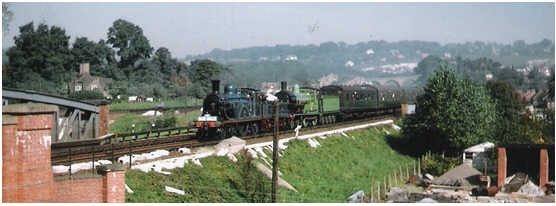A Good Run
Suddenly the color signal lights turned green. Both the starter and advanced starter whistles started to shriek. At the other end of the platform, slamming of doors–city gents running to jump on the train at the last minute with their evening newspapers rolled umbrellas and bowler hats. The train was packed we had nine coaches on and a B.R. Standard as the work horse. It was 1724, another whistle, a green flag back down the platform and we were off. Stan Rapley was the Driver and I was the Stoker. “Keep a sharp look out Mickey boy and we will be fine!” he shouted above the noisy din. We were pulling out of London Bridge in fine style and going well, slowly gaining speed and pulling ahead of the electric trains that were leaving from other platforms.
 Standard Class 4 76058 arriving at Redhill with the 5.25pm from London Bridge. Courtesy A.J. Wills Photographic Collection
Standard Class 4 76058 arriving at Redhill with the 5.25pm from London Bridge. Courtesy A.J. Wills Photographic Collection
www.southernrailway.net
It was the five twenty five London Bridge to Reading via Redhill, and we would run fast to Redhill; I knew it would be 35 minutes of hard work. It is downhill from London Bridge to New Cross Gate and from there on for the most part an uphill pull to Merstham Tunnel and a short drop to Redhill. At that point our shift was over and we were relived with a change of crew. At New Cross Gate we were on time and all signals were in our favor.
The steam pressure gauge was 220lb/psi; the water gauge glass was full, just right for the long uphill pull. The stoker’s job was to keep a good head of steam, and make sure the water in the boiler did not run low, and in between I had to keep a lookout.
Among the stations we would be passing were Forest Hill, Anerley, Norwood Junction, East Croydon, Purley, Merstham and stop at Redhill.
East Croydon was always an interesting place, the engine was working hard at this point and the platform we passed through was always packed with people awaiting the next train. Just as we got to the end of the platform I threw a shovel of coal dust on the fire; the effect — black smoke, soot and sparks raining down on the platform and landing on waiting passengers.
“Good shot Mickey boy!” shouted Stan smiling, although if there had been a complaint I am sure we would have denied all knowledge. It was good fun at the time, But in hindsight and 40 years on a bit irresponsible*. As we entered Merstham tunnel Stan glanced at his watch and on our exit I gave the fire a pull through with the rake so as to loosen any clinker on the fire bars, then with a few more shovels of coal we were entering Redhill Station. The safety valves lifted at 225lb/psi. I noted the boiler was full and we were on time. We were relieved by the crew who would take the train on to Reading via Guildford. We had a short walk back to the engine sheds. I was deep in thought about how much coal I had shifted in the past 40 minutes, and what an exciting job it was working on the railways. “A good trip Mickey boy well done!” said Stan; I was again so pleased to hear those words.
A Bad Trip
It was Monday August 5th 1957 a bank holiday. I booked on duty with my regular driver Mr. Archie Over. He was a quiet man, a member of the Salvation Army and played in the band at Redhill. We always got on well. The great advantage of being his Stoker was that he was a very experienced driver and a former Brighton man. This meant he knew many south coast routes which was an advantage as I got to see places and towns many other stokers did not.
However on this particular day we were booked to do a local run to Guildford and return as passengers. It was a special excursion going across to the western region via Reading. The engine allocated was a Q1 austerity 0-6-0 which belonged to Guildford depot. This class of engine was built in 1942 at
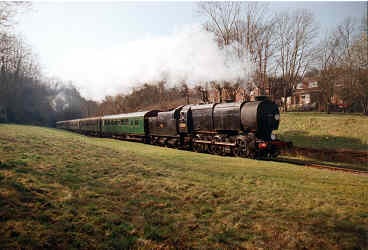
Q 1 Class on the Bluebell Railway
Photo: Mr. S. Leek
Ashford and Brighton. They were built for heavy goods with driving wheels of 5ft 1in. They were powerful engines but not built for speed.
I somehow knew we would have problems when I saw the quality of the coal we had been loaded with. It was compressed coal dust formed into bricks with some sort of resin. I knew from experience they did not burn well. We backed out onto number 2 platform at Redhill the guard came and got the driver’s name and my spirits dropped when he stated “15 mate, 15 coaches!!” and it was packed.
Soon we were coupled and away, to start with it’s an uphill climb to Reigate and we were soon in trouble. Going through the level crossing at Reigate I noted the steam gauge had dropped to 160psi and the boiler was ¾ full; the fire was not burning well. However we had a bit of time to recover as there was now a down hill run for a time. I knew I would have to get a better steam pressure and get the boiler full before Deepdeen where we would start the long climb up Dorking Bank.
Before getting there Archie would have to build up as much speed as possible before the long haul up.
I managed to get the steam pressure up to 190 psi but the water gauge was dropping. Archie was a good driver and never made a big fuss about anything. He knew I would do my best. We went through Deepdeen at about 60mph and it was a shaky experience on this old wartime workhorse; we managed to keep going but the pressure in the boiler was dropping and so was the water. Stoking was little and often and using the rake sometimes to help combustion we were getting there. At the top of Dorking bank we had dropped our speed to 15mph and the steam gauge was back to 100psi. But the boiler was nearly empty; at least we were still moving—just.
Our problems were not over yet. I had to somehow get the water in the boiler back up and the steam pressure. As Archie closed the regulator down so the water dropped.
My concern was that a fusible plug would blow and that would be the end of the trip for us and the passengers. The water was so low it disappeared from the gauge glass. I put both injectors on which in turn lowered the steam pressure. It was a juggling act but again we were still moving.
As we approached Shalford Junction we would be entering the tunnels just outside Guildford, not a good place to run short of steam and have a forced stop. We made it and crawled into Guildford station; we were 15 minutes late and a relief crew was waiting. We explained the problems and wished them well for the next part of the trip. I wished we had a footplate inspector on board that day.
In memory of those died and were injured at Lewisham 4th December 1957
To those who lost partners Children who lost fathers mothers. The rescue workers, Fireman, Ambulance, Police, and Railway Staff. And many others who are unknown who helped on that night.
In 1957 I was a stoker at Redhill motive power depot Numbered 75B
Some 61 years have now passed by and on the morning of Thursday 5th December 1957, I was booked on duty at 6am with a Mr. Parsons, he was a bit deaf and a grumpy sort of chap and he always called me boy. It was another bitterly cold frosty morning with freezing fog patches. Shunting duties were often a bit tiresome; however better than the P.D. (Preparation and Disposal.) We were for the most part in Redhill sidings before other drop off and pick up duties. News was reaching us of a bad accident the night before and a steam engine was involved with many casualties.
“Go to the platform and get a newspaper” he demanded. This I did; on my return he read my paper first {I had paid for it.} It was very bad news with a total of 266 casualties: 90 dead and 173 injured.
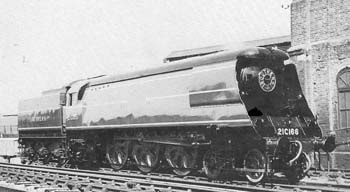 A steam hauled train had crashed into the rear of an electric train at Lewisham in south London bringing about the partial collapse of an overhead bridge. The engine involved was Battle of Britain class 34066 named Spitfire, indeed it was sad reading, my mind was that of deep concern for all involved.
A steam hauled train had crashed into the rear of an electric train at Lewisham in south London bringing about the partial collapse of an overhead bridge. The engine involved was Battle of Britain class 34066 named Spitfire, indeed it was sad reading, my mind was that of deep concern for all involved.
However it was time for breakfast. First clean the coal shovel, sterilize it in the fire, add small amount of lard, 3 slices of bacon and an egg, a bit of bread for toast and eat it off the shovel, finally a mug of hot tea, a great breakfast but a very sad day. Now some 56 years later I think on those happenings and the many memories of my youth.
Above: This is Spitfire seen new at Brighton in 1947 Before being named.
4-6-2 Pacific Class
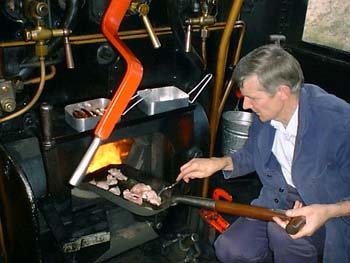
Above Breakfast off the Shovel
Grateful thanks The Watercress Line
On the evening of 4 December 1957 there was dense fog in the London area and trains were running late. The 5:18 pm Charing Cross to Hayes, consisting 10-car electric multiple units carrying nearly 1,500 passengers, stopped at a danger signal at Parks Bridge Junction on the Lewisham by-pass line, under a bridge carrying rail tracks over the line. Trains were running out of order because of the fog and the Parks Bridge Junction signalman wished to speak to the driver by the telephone at the signal to confirm the train’s identity and destination. At approximately 6:20 pm it was struck from behind by a train from Cannon Street to Ramsgate via Folkestone, consisting of a steam locomotive hauling 11 coaches carrying about 700 passengers and travelling at about 30 miles per hour. The collision threw the tender and leading coach off the track, dislodging a pier of the bridge, causing it to fall and crush two coaches. Two minutes later a train due to pass over the bridge stopped short, although its leading coach was tilted. There were 90 fatalities and a large number people were taken to hospital, of which 109 were admitted.
The first emergency response arrived at 6:25 pm with the Fire Brigade, Ambulance and Police being assisted by doctors and nurses. Help was accepted from the Salvation Army, the Women’s Voluntary Service, St John Ambulance Brigade and local residents. By 10:30 pm all of the injured had been taken to hospital.
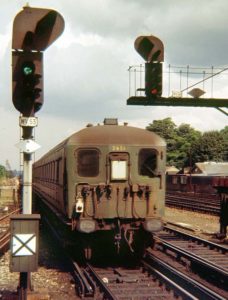
All four of the running lines under the bridge and the two over it were blocked. At St Johns station just north of the bridge the North Kent line diverges, but this needed to be closed and the traction current switched off during the rescue. An emergency timetable started at 6:10 am the following morning, with local trains travelling through Lewisham, avoiding the accident, and main-line services diverted to Victoria, another London terminus.
At 4:00 pm on 9 December the trains and the fallen bridge had been cut up and removed. The track then had to be re-laid and the lines under the bridge were reopened at 5:00 am on 12 December. A temporary bridge was built and the overhead line was reopened at 6:00 am on 13 January.
The jury at the inquest declared that the deaths were due to gross negligence, but the coroner rejected the verdict and substituted one of accidental death. The driver of the Ramsgate train was then tried for manslaughter, but the jury could not reach a verdict. He was acquitted at a second trial.
Mr Chadwick, a member of the public who assisted at the accident, successfully sued the British Railways Board for the “nervous shock” he experienced. The case, Chadwick v British Railways Board, an important precedent for 30 years, was essentially overruled by White v Chief Constable of South Yorkshire.
The Ministry of Transport report on the collision was published in 1958. Witnesses were interviewed; the visibility of the signals on the line examined, and tests showed no fault in the signalling equipment. The report found that the driver had not slowed for two caution signals, and applied the brakes only after the fireman had called to him that he had a danger signal. Although he had poor visibility of signals from the driver’s seat, he did not cross over to see them, or ask the fireman to look for them.
The report concluded that an “Automatic Train Control of the Warning type” would have prevented the collision.
The Night Train
In the 1950s a lot of goods were moved by rail and quite a large proportion were at night, some were interesting and some were mundane and not worth mentioning. One regular trip into London many stokers and drivers will remember. Although I am unable to remember the exact timings although the story is true.
We would leave Redhill in the evening at about 1900 hours and set off with a heavy load of mixed goods to our first droop off point at East Croydon.
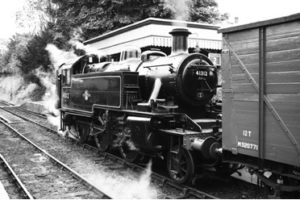 Photo: J. Gurr
Photo: J. Gurr
At various points we would be held in a siding en route to facilitate passenger trains passing. At Norwood Junction we had shunting duties which meant we took off several wagons and added others before proceeding into south London. Now we come to the interesting bit; at about 2200 we had usually finished our duties and we would wait for the right of way out onto the main line, we never minded waiting because there was live entertainment to view.
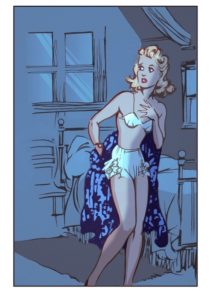 This was in the form of a young lady that would strip off slowly and right in front of the window with no drawn curtains. This young lady would fold everything with care and take her time because she knew we were taking interest. Every Stoker and most Drivers in Redhill would talk about this regular entertaining evening at Norwood Junction. We still had our shift to complete and when the signals were in our favor we set off with our cargo. Somewhere near Bricklayers Arms we would deposit our train then take the engine into Bricklayers Arms Shed.
This was in the form of a young lady that would strip off slowly and right in front of the window with no drawn curtains. This young lady would fold everything with care and take her time because she knew we were taking interest. Every Stoker and most Drivers in Redhill would talk about this regular entertaining evening at Norwood Junction. We still had our shift to complete and when the signals were in our favor we set off with our cargo. Somewhere near Bricklayers Arms we would deposit our train then take the engine into Bricklayers Arms Shed.
All we had to do was report to the Shed Foreman and take a slow walk out on to The Old Kent Road then up to the Borough, we always stopped for a chat at Joes; who was a street trader for a cup of tea. Then walk round to London Bridge and ride home as passengers on a late night train.
Bradby’s Bridge
Shalford Surrey
C 1959
A Reading south passenger train crewed by men from the Reading southern shed left the station at 0735 it was on time and bound for London Bridge via North Camp, Guildford and Dorking Redhill and London Bridge. In the early hours on the same day a goods train left Redhill and on this occasion the driver was Percy Holland (nickname duchy) and the stoker was John Bradby, this train called at several goods yards and their final destination on the outward run would be Northcamp where the crew’s would swap places. Percy Holland and John Bradby would return to Redhill with the passenger train and the engine was a Standard class 4, 2-6-0. The men from Reading would return to their home station with the goods train.
The Return Passenger Train to London Bridge: This was a stopping train and would call at Ash, Wanborough, Guildford, Shalford, Chilworth, Gomshall, Dorking Town, Deepdene, Betchworth, Reigate, Redhill, Merstham and Coulsden South, then fast to London Bridge. At Redhill Percy and John would be relived and another crew would take the train onto its final destination, at this point it would be the end of the shift for John and Percy. However things do not always go to plan and in this story everything changed at Shalford. After leaving Guildford the train entered Guildford tunnels, on exit the signal for Shalford Junction gave the crew the right of way to branch off to the left leaving behind the electrified Guildford to Portsmouth line. Soon they would be in sight of the Shalford station distant signal.
As the train approached Shalford station John decided to climb onto the rear of the tender, it was here that they would take on water from a water crane so that everything was ready and in place for the undulating course through the surrey hills and then on to London Bridge. Unfortunately John forgot about the public footbridge spanning the rail lines; he suffered a severe blow to his head causing a large gash. As the train came to a halt John was bleeding profusely, and laying across the entrance to the tender, Percy Holland shouted for help and dragged John back onto the footplate as best he could. Urgent telephone calls were made to the ambulance service and to Redhill M.P.D.
I was sitting in the locomotive men’s room when the shed foremen entered and informed us that John had been involved in an accident near Guildford at that time that was all the information we knew. By this time an ambulance had arrived at Shalford station and medics removed John to Guildford Hospital.
By good fortune Peter Stride a Redhill stoker happened to be travelling on that very train as a passenger back to Redhill having worked an earlier goods train to Guildford; however he was not very happy about the situation and refused to get onto the engine until the blood had been washed off the footplate area.
John was detained at the Hospital for three days and the head wound required approximately twenty stitches, his injury caused his to remain of duty for a month. Some time later John made notes about this accident; he kindly lent them to me when we met on Sunday 13th April and I reproduce them in his own words below.
“About October / November, I was working the 1-10 goods train with Duchy Hollands to Guildford, then on to Ash were we were to shunt, then on to Northcamp. We changed trains and left the goods to work the Reading to London. On this train we stopped at Shalford for water where there are 2 road and 2 foot bridges. I forgot about the second foot bridge! My head hit it and I did not know about this until I woke up later in the day with my Mother at my bed-side. [ A few days later. ] One of the drivers from Redhill phoned Guildford hospital to enquire how I was and he was told I had just gone. Imagine what he thought, gone departed, left this mortal soil. He started a collection for me following my assumed demise only to find I had merely gone home.” With grateful thanks to John Bradby for his help with this document.
Johns Photographs
John Bradby had the foresight to take many Railway Photographs around Redhill and Reading area in the 1955—1985 period, he has kindly given me permission to use them and make the pictures available to a wider audience for those of us who have an interest in the Railways, they are shown below.
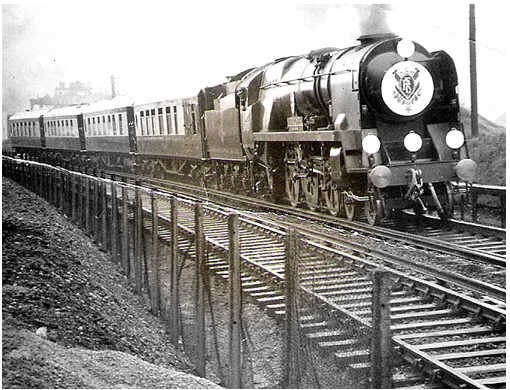
May 1959
Photo Above: John Bradby / Peter Sargent
Shah of Iran, State visit to U.K.
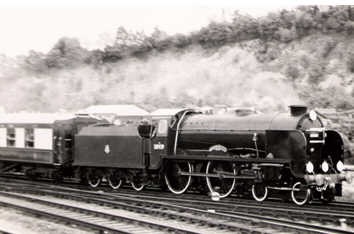
Above: 30939 Leatherhead, Schools Class, with the Royal train taken at Purley 1957 en route to Epsom, Derby Day.
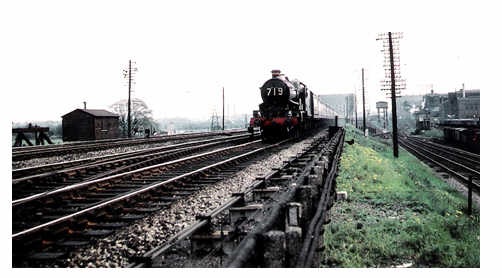
Unknown engine approaches Reading with a passenger train. To the right of the picture the link from G.W. R. to Southern Region with the S.R. Signal Box to the right of the telegraph pole.
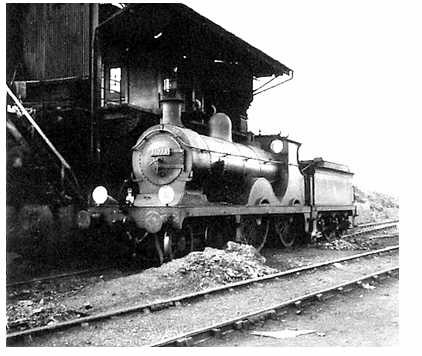
Above:
D Class 4-4-0
Seen at the coal stage
Redhill 1956
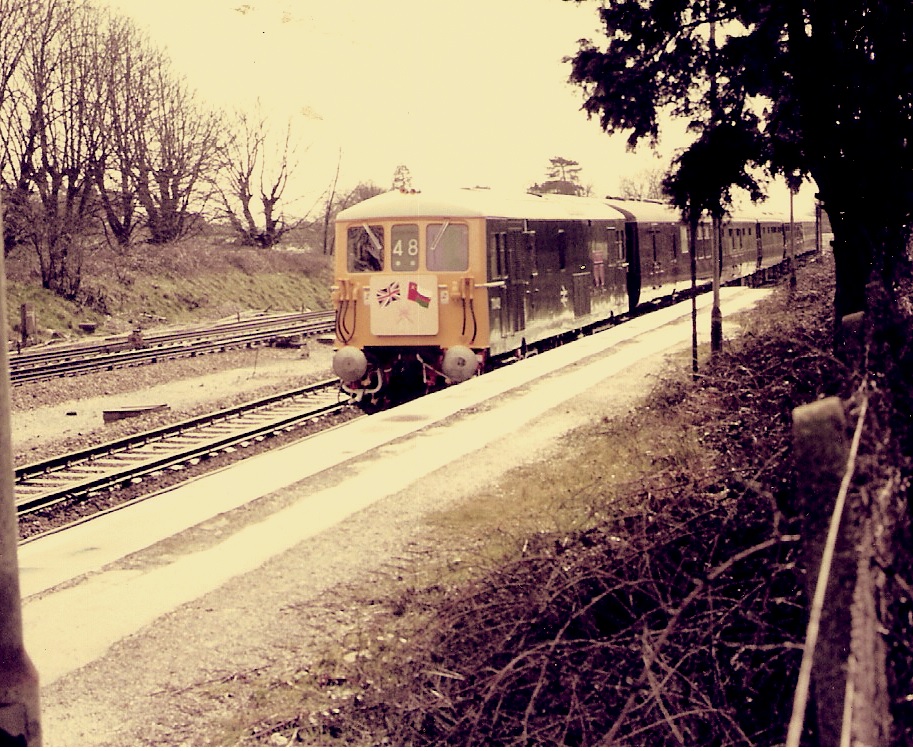
Above: State Visit, Sultan of Oman 16 March 1982
